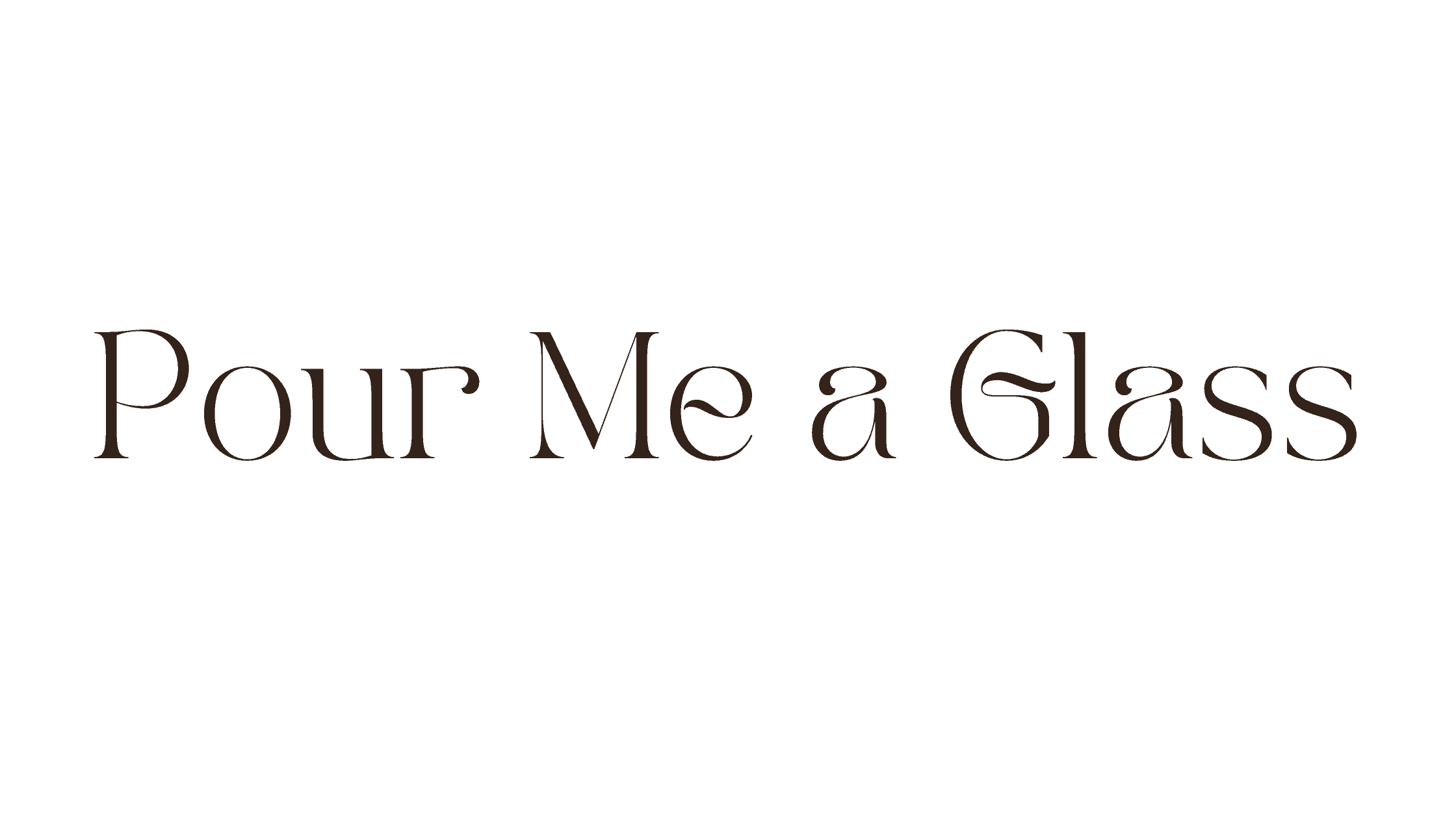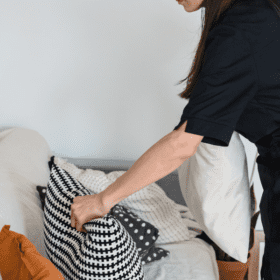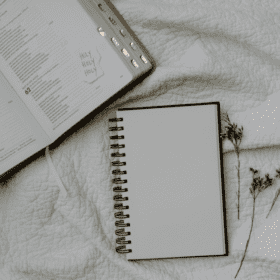This blog post is all about How to Create a Routine and Stick To It.
Creating a routine is essential for everyday living. After all, no one wants to wake up to an unorganized day. Waking up without having a simple routine can create stress, feeling overwhelmed, and it may cause you to procrastinate more often.
A routine is composed of small things you do throughout the morning, day, and evening every single day. Routines help you stay productive and allow you to accomplish your tasks. All your tasks or activities are planned around certain times of the day and in a particular order.
You do not need to have a 50-step morning, day, and evening routine, but knowing what you need to do every day will give your life a sense of flow.
So in this blog post, we talk about How To Create A Routine and stick to it, The Types of Routines You Can Create, and The Benefits of Having a Routine.
How To Create A Routine and Stick to it
Types of Routines
There are three different types of routines you can create.
A Morning, Day, & Night routine.
The most essential routine is the morning routine because this one gives your day a sense of direction. Instead of waking up all scattered and running around like a chicken with its head cut off, you will be able to wake up at a slower pace and enjoy the peacefulness of the morning.
Most of your morning routine, though, is planned the night before. So if you want to create a routine of working out in the mornings at 5 am, setting your clothes out the night before will remove a step & will increase your likelihood of actually getting your workout in. Or if you need to commute to work early in the morning, setting your work clothes out will allow you to have a more blissful morning.
Day Routine
Your daily routine is mainly formulated with your work. However, depending on the type of job you have, this can vary. If you own your own business, you might have a routine set where you have morning meetings, respond to e-mails, work on specific projects throughout the day, etc.
Evening or Night Routine
The second most essential routine is your evening and night routines. Usually, they start after you get out of work and right before you go to bed. This can be a time when you unwind, go to the gym, hang out with family & friends, clean, etc.
Benefits Of Having a Routine
If you jump from one task to another and find yourself not fully completing any of them, then a routine will significantly benefit you.
Having a routine will simplify your life and remove distractions. You will be able to take control of your day instead of the day taking control of you. You will also find that you won’t procrastinate as much because you will know when, where, and what you need to do through specific periods of the day.
Routines will bring rhythm and a state of flow into your life. You will be able to be immersed in your own life, focusing on what you need to be doing instead of seeing what others are doing. Rhythm is also fundamental to routines because it gives you control over your life. Rhythm helps you feel peace, and you’ll be able to accomplish more in life.
It will also aid you in being consistent. Without consistency, you will not accomplish anything.
How To Create A Routine
Vision
The first thing you want to do when creating your routine is to envision what you want for your life. Since a routine is designed to help you stay consistent and provide rhythm in your life, you can create it however, your little heart imagines it.
Write it Down
After you have envisioned what type of routine you would like to implement into your life, write your vision down. Make sure you are as descriptive as you can be. This will help you plan out your days and help you stay on track when you’re steering away from your routine. You can jot it down in your journal, pin it on your vision board, or write it in your yearly goals notebook.
Make A List
What stands out from your written vision that you can include in your routine? For example, let’s say I wrote, “I want to lose weight and gain muscle while also fueling my body with the most nutritious meals. I also want to spend more time in my garden and harvest my fruits and vegetables at the right time. Spending less time on my phone and reading more often…”
On “my list,” I would write down…
1. Workout
2. Meal prep
3. Check-in
4. Gardening
5. Harvesting
6. Personal Reading
7. Screen Free
Wake & Sleep Cycle
After you have created your list, it’s time to figure out what time you will be waking up and what time you will be going to bed. A routine relies heavily on your wake and sleep cycles. If you currently don’t have a set sleep and wake schedule, it’s the best time to start.
Sleep plays an integral part in your overall well-being. Not enough sleep can affect your day-to-day goals and mindset. While sleeping too much can also affect what you get done throughout the day.
Once you have a sleep and wake schedule that works for YOU and YOUR lifestyle, it’s time to create your routine!
Implementing a Routine
In the first few weeks of implementing a new routine, whether morning, day, or evening, you need to become self-aware of what is working and what is not. You will also need to start timing certain tasks to see if completing them takes less or more time. If you feel like you’ve been more stressed since creating a routine, then some changes might need to be made.
How long it takes for your routine to become second nature depends on your consistency. Also, only if you genuinely enjoy your daily routine and if it brings a sense of rhythm into your life.
Be Flexible
Flexibility is essential in creating routines, or else you will feel like you’re in a never-ending rat race. If something is not working for you, CHANGE IT. Nothing is set and stone. Just because you envisioned and planned it out doesn’t mean it will work when you implement it into your life. Instead, you’ll discover what you like, when you like to do it, and how to do it.
Another thing to keep in mind is that a routine isn’t a be-all-end-all. Life happens when you least expect it and can throw you off your routine. You might be taking a vacation somewhere, or someone came up with last-minute plans, and THAT’S OKAY! Take the vacation, hang out with your family and friends, and take a break.
Pick up the next day or week where you left off. A routine isn’t a be-all-end-all.
Consistency
Consistency follows flexibility. Once you’ve played around with your routine, it’s time to remain consistent. You want to make your routine a habit. Making it such an integral part of your life that others know they may not find you at a certain time because you’re doing XYZ. You’ll also find yourself in a state of rhythm and flow which is important to have in your life.
You can track your consistency by either printing a habit tracker and filling it in or using apps that give you reminders and track your progress, such as the app called “Habit.”
Being consistent will give you more results than doing things here and there.
Conclusion: How To Create a Routine & Stick To it
Routines are an essential part of everyone’s life. If you can create a doable routine that you absolutely love, you will feel in control of your life and give your day a sense of purpose. You will discover that working and achieving your goals has become a bit easier and more consistent than before.
While a routine isn’t a be-all-end-all, it does help you plan out your days and allow you to enjoy them deeply.
These are a few ways on how to create a routine and stick to it!












